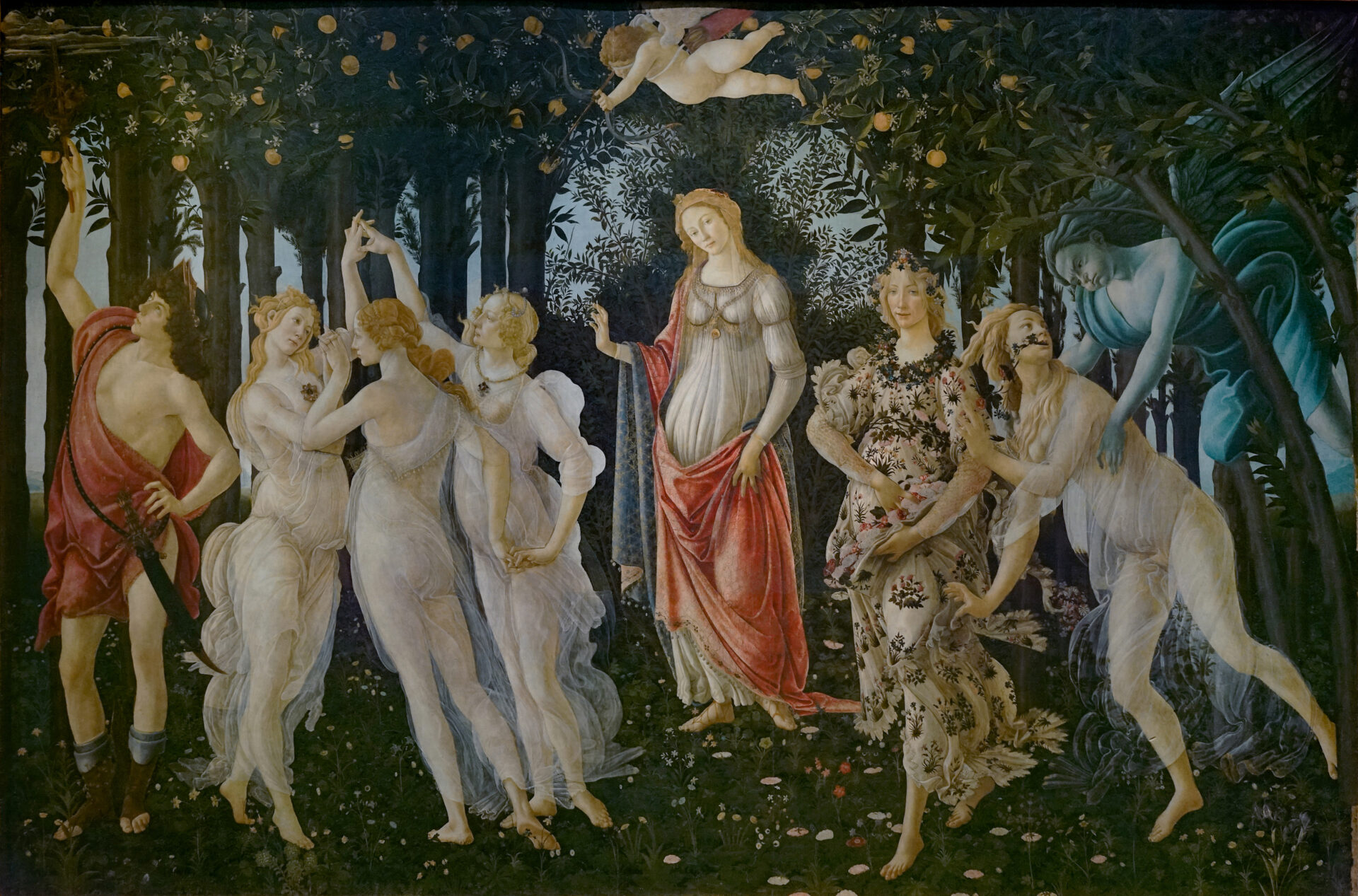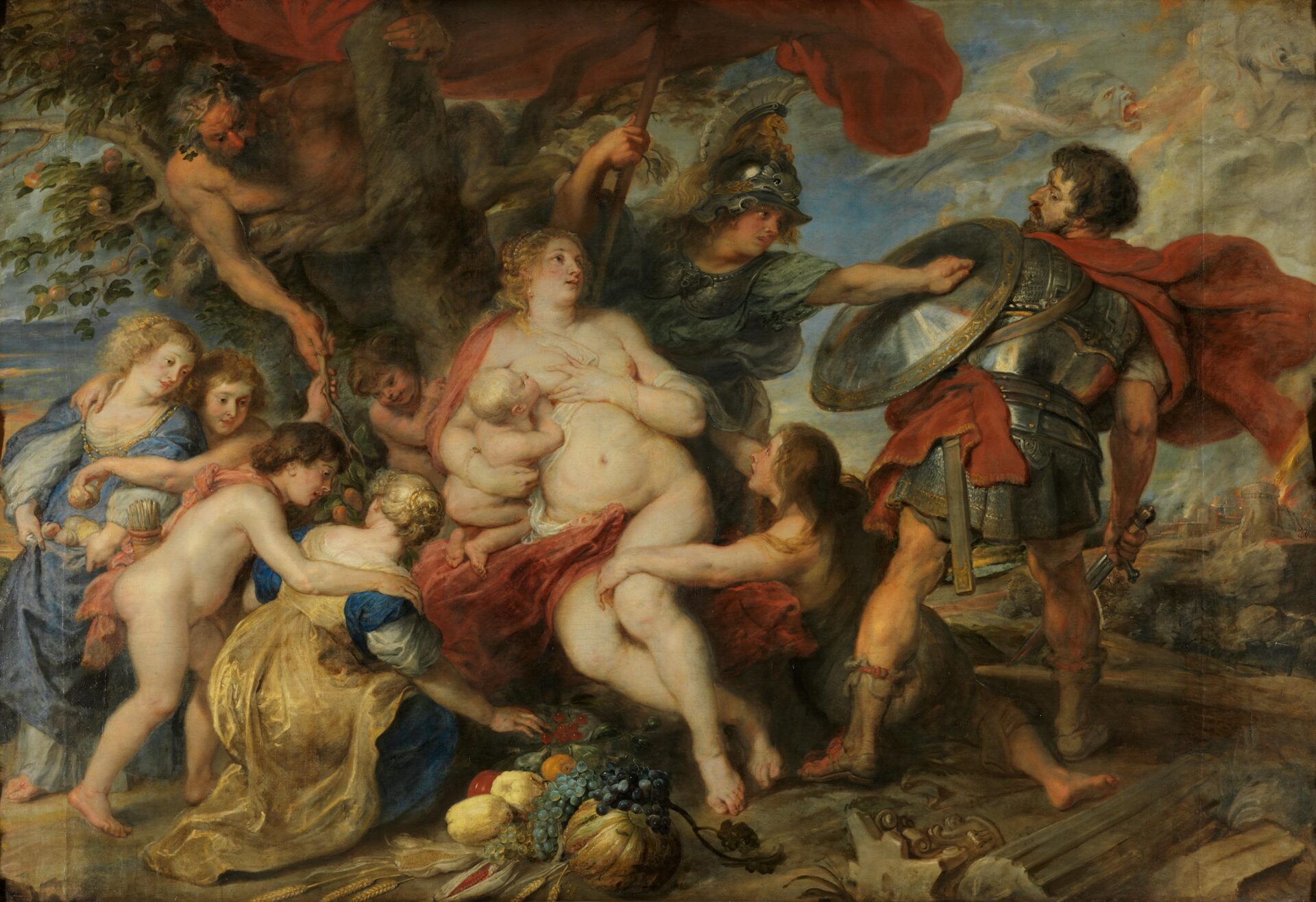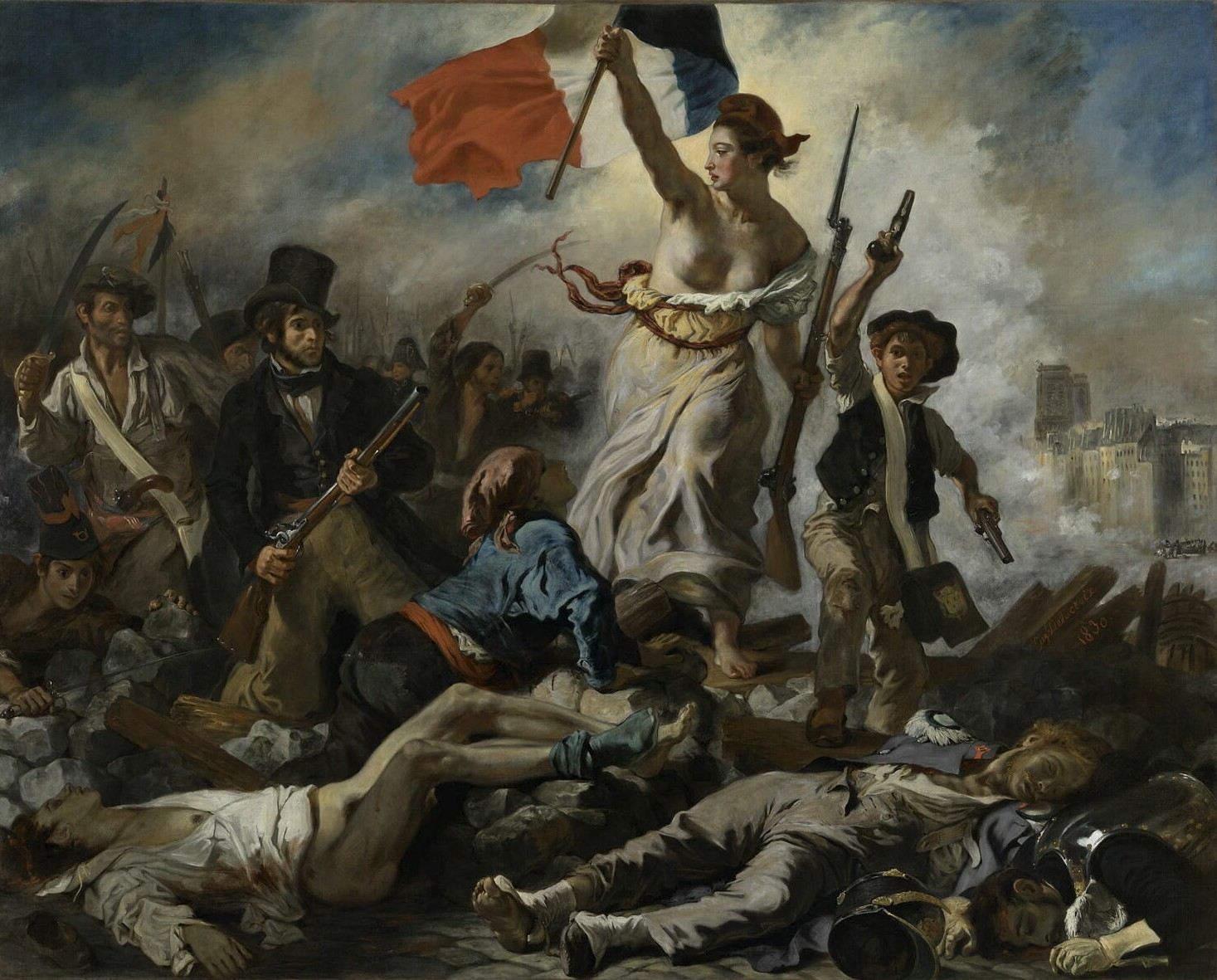No products in the cart.
September 12, 2025
This week, time is slipping through my fingers. My calendar is jam-packed, I hardly know where to turn, and yet I'm only getting half as much done as I'd like to. For example, I had a great topic for the blog in mind for this week. I'm not going to reveal what it is yet, because the article is still to come. But it requires a lot of research.
Well, today is already Thursday, and the article is supposed to be published tomorrow. So I have three options:
The choice wasn't that difficult after all. And I came up with the idea for a new series of articles: Art briefly explained. In my articles, I inevitably have to use terms from art history that are not always self-explanatory, such as chiaroscuro or vanitas.
And then I thought to myself, instead of always linking to external sources, I could write something about these terms myself. Not as short and dry as a glossary, but not a whole treatise either. More of a middle ground. Well-founded, with context and background. That way, I can learn something myself and hopefully you will enjoy it too.
Let's start with allegory.
The word ‘allegory’ comes from Greek: allos means “different” and agoreuein means ‘to speak publicly’. Taken literally, it means ‘saying something differently’, expressing something in an unusual way.
In art, it means representing something abstract through something concrete, thus making it understandable and vivid. Essentially, it is a kind of metaphor (although metaphors are usually a single image, allegories tend to be more extensive visual language) that gives a face to concepts such as virtue, death or love, envy or hope. These concepts become an acting character or an entire scene.
An allegory is a stylistic device that artists use to give shape to ideas and make the invisible visible. Justitia, the goddess of justice, with scales and sword; Cupid, god of love, as a winged boy with bow and arrow; Nike is almost always depicted with wings. She embodies victory, both in war and in sport. Typical attributes: a laurel wreath or a victory palm, sometimes also a cup or trophy.
It is no coincidence that these examples are all Greek deities. Both the Greeks and the Romans embodied abstract ideas such as fidelity (Hera/Juno), wisdom (Athena/Minerva), war (Ares/Mars), or innocence/purity (Artemis/Diana) in divine figures.
When the Renaissance rediscovered antiquity, artists drew on this vocabulary. Allegories were often given ancient forms, even though the Christian world had different concerns at that time.
This pattern persisted for centuries. Even during the Enlightenment and into the 19th century, it was common to draw on these familiar images.
Allegories are not limited to painting. In literature, too, abstract concepts are made tangible through images or figures. A classic example is Dante's Divine Comedy. Dante's journey through Hell, Purgatory, and Paradise is not only a travel story, but an allegory of the human journey through life. From the wrong path of sin to purification and redemption, it is, of course, very Christian in nature.
The same is true of the accompanying figures. Virgil, as human reason, only reaches as far as Purgatory, but only Beatrice, as an allegory of divine love, leads to Paradise.
An allegory is the visual representation of an idea. A symbol is also a visual representation. So what is the difference?
A symbol is usually a single sign that refers to an abstract idea. A dove stands for peace, a heart for love, a skull for transience. Symbols are often easy to recognise because they have become ingrained over the centuries and convey meaning to us almost automatically.
An allegory is more comprehensive. It is a complex figure with attributes or an entire scene that may even combine several ideas.
One could say that the symbol is the sign, while the allegory is the story that emerges from this sign. This can be seen again in the example of Lady Justice. In every depiction, she has three important attributes.
Each of these elements functions as a symbol in its own right. A clearly recognisable sign with a specific meaning. These symbols are brought together in the figure of Lady Justice. She is more than the sum of her attributes.
As a whole, she tells a story. Without regard to the person, Lady Justice weighs up the evidence, passes judgement and enforces the punishment. In this way, individual symbols are combined to make justice as a whole visible.
So much for theory, but now let's get down to brass tacks. To make the whole thing more tangible, here are three of the most famous allegories in art history.

Sandro Botticelli, Primavera, Galleria degli Uffizi, Firence
At first glance, Botticelli's Primavera appears to be a lush garden dream, but it conceals a multi-layered allegory: spring as a symbol of love, fertility and new beginnings.
Venus stands in the centre, slightly set back, as an organising figure who places the events in a larger context. As the goddess of love, she gives the events a higher meaning. Love as the connecting principle that holds all the forces of spring together.
Above her hovers Cupid, blind, with his arrow drawn. He does not know who his arrow will strike, but whoever it may be, love will ignite him or her. On the left, the three Graces dance, representing grace, beauty, and joie de vivre. On the far left, at the very edge (somewhat cropped here), Mercury can be seen dispelling the clouds with his staff, a reference to the expulsion of winter.
On the right of the painting, the wind god Zephyr rushes in and seizes the nymph Chloris. Flowers grow from her mouth, and she is transformed into Flora, the goddess of blossoms, adorned with a wreath of flowers and an embroidered dress.
The basis for this is an ancient myth that Botticelli probably knew from Ovid's Fasti. The west wind Zephyr seizes the nymph Chloris by force and against her will. He then marries her and grants her the status of a goddess. She becomes Flora, goddess of flowers and spring.
This ‘reward’ after an act of violence naturally reflects the worldview and image of women at that time, in which a man's control over women was mythologically glorified. People of the Renaissance saw nothing reprehensible in this, but only an explanation of how spring comes about. The ‘transformation’ was seen as a metaphor for nature, which becomes fertile (female) through external (male) impetus.
Botticelli's inclusion of the scene is therefore linked to the allegory:
Zephyr, the impetuous impulse of nature, and Chloris, who is reduced to a passive recipient. His wildness gives rise to Flora and with her blossoming, growth and beauty. Both are accompanied by the Graces, Cupid, Venus, and Mercury.
Together, the painting tells the story of spring. From the wild awakening of nature to the orderly harmony of love, fertility, and beauty. An allegory that goes far beyond a seasonal image and celebrates the cycle of life, even if the starting point in mythology is a violent scene.

Peter Paul Rubens, Allegory of Peace, Bayrische Staatsgemäldesammlung, Alte Pinakothek, München
Rubens painted his allegory of Peace at a time when the whole of Europe was ravaged by war. The occasion was the peace negotiations between England and Spain in 1629/30, in which Rubens himself was involved as a diplomat. He interpreted the theme artistically in several versions.
The right half of the painting is dominated by war. There stands Mars, the god of war, in the form of an armoured man with a sword, but he is being pushed back by Minerva, the goddess of wisdom. In the background, a burning city can be seen, and in the sky, the Furies, embodiments of chaos, are flying away. This side of the painting shows the horrors of war.
But in the centre sits Pax, the figure of peace. Her voluptuous physicality is not only due to Rubens' preferred painting style. The body stands for abundance, fertility, and richness of life, its nakedness for vulnerability in contrast to the armoured masculinity of Mars.
Children, women, and a satyr romp around her, bringing fruits and ears of corn. There is also an abundance of gifts on the ground. Grapes, pumpkins, corn, symbols of fertility and abundance. The fact that Pax is nursing a child shows that peace is not abstract, but concretely nourishing. It gives life, prosperity, and a future, in contrast to war, which destroys.

Eugène Delacroix, Liberty Leading the People, Louvre, Paris
Delacroix's Liberty Leading the People is probably one of the most famous allegories of modern times. Everyone recognises this painting immediately. This is probably because hardly any other painting combines allegory and real contemporary events so concretely. It became a symbol of the revolution.
The occasion was the July Revolution of 1830 in Paris, during which the Bourbon monarchy was overthrown.
At the centre is the figure of liberty, a woman with bare breasts and a waving tricolour in her hand: Marianne. She is the ‘Republic personified’. She first appeared in the 18th century. Her name she probably got because Marianne was a common female name and stood for ‘the common people’.
She is usually depicted as a woman wearing a Phrygian cap (red liberty cap), often bareheaded or with flowing hair, sometimes bare-breasted as in Delacroix's painting. Caps similar to the one Marianne wears were given to freed slaves in ancient Rome as a sign of their newly won freedom. From 1789 onwards, the red Phrygian cap became a symbol of freedom, civil rights and the break with oppression.
In art, personifications such as freedom or truth are often depicted bare-breasted. Sex sells, yes, but here it is not meant to be erotic, but rather a sign of purity, truthfulness or ‘naked truth’. In Delacroix's painting, the bare breast is also an image of ‘Mother Liberty’ giving birth to her people.
At the same time, it was unusual in 1830 to show a woman with bare breasts in a political context. A woman, idealised and real at the same time, taking to the barricades with her breasts exposed – this was definitely intended as a provocation.
Very different people are fighting and dying for freedom. Workers in shirtsleeves, citizens in top hats, even children with pistols. Delacroix thus shows that the people, in all their diversity, are standing up for freedom. Dead bodies lie on the ground, smoke and barricades fill the background.
Delacroix merges two levels in his work. Reality, as a documentary impression of the fighting in Paris. And allegory, as an exaggerated figure of freedom, advancing barefoot and carrying a flag.
Freedom is not just an abstract idea, but a fighting figure. It acts itself in history and fights alongside the people. For it is not only the goal. The combat itself is an act of freedom.
It was obvious that it wouldn't be so short after all once I got into the topic. But I was happy to burn the midnight oil, because it was really fun to explore the topic of allegory.
Incidentally, allegories are not a relic of the past. We encounter them all the time today. In art, yes. But also in advertising, politics, pop culture. Even in memes. One of the best knowns is certainly the ‘Distracted Boyfriend’ meme. It exists in countless variations and on almost every topic, because the characters do not stand for themselves. They are allegories.
The girlfriend represents what is existing, reliable, easy to overlook, what can be lost if we don't take care of it. The man represents infidelity, distractibility, susceptibility to disruption. And finally, the other woman. She represents temptation, the allure of the new. She is the shiny object.
From Botticelli, Rubens, and Delacroix to an internet meme. What a journey! But allegories are not an outdated stylistic device from centuries past. We still use this visual language today. Sometimes in everyday life and sometimes in highly political contexts.
Join the newsletter now
and not miss a thing
Get exclusive insights into my creative processes, learn the stories behind my artwork
and receive invitations to my exhibitions and events.
To say thank you, I'll give you 10% off your first purchase.